Entry Category: Race
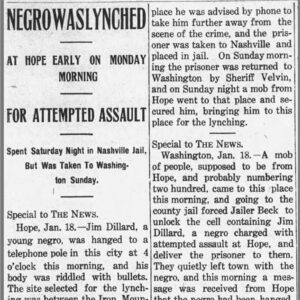 "Jim" Dillard Lynching Article
"Jim" Dillard Lynching Article
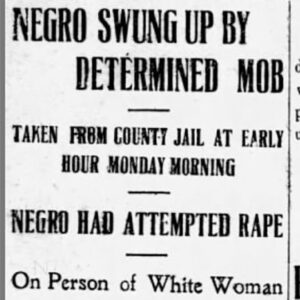 "Tom" Dillard Lynching Article
"Tom" Dillard Lynching Article
Dodd, Frank (Lynching of)
 Dodd Lynching Article
Dodd Lynching Article
Donnelly, Robert (Lynching of)
Dove v. Parham
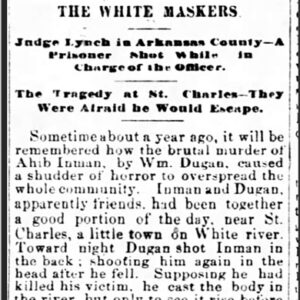 William Dugan Lynching Article
William Dugan Lynching Article
Dumas (Lynching of)
 Dumas Lynching Article
Dumas Lynching Article
Dumas Race Riot of 1920
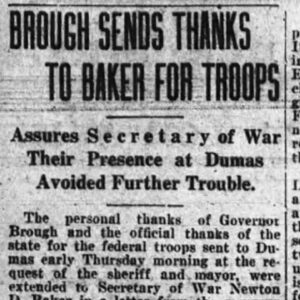 Dumas Race Riot of 1920 Article
Dumas Race Riot of 1920 Article
 Dumas Race Riot of 1920 Article
Dumas Race Riot of 1920 Article
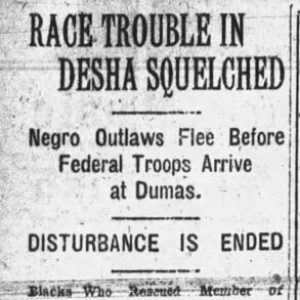 Dumas Race Riot of 1920 Article
Dumas Race Riot of 1920 Article
 Dumas Race Riot of 1920 Article
Dumas Race Riot of 1920 Article
Earle Race Riot of 1970
 Eckford Bench
Eckford Bench
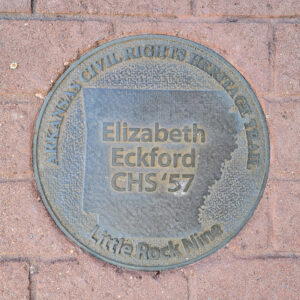 Eckford Marker
Eckford Marker
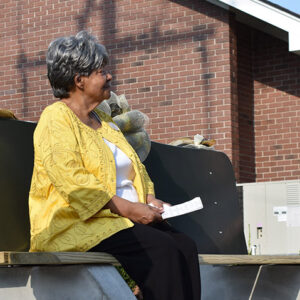 Elizabeth Eckford
Elizabeth Eckford
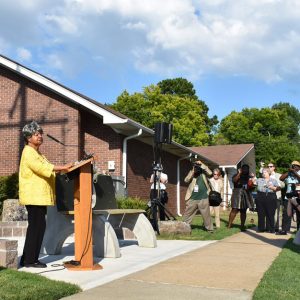 Elizabeth Eckford
Elizabeth Eckford
Eckford, Elizabeth Ann
Edmondson Home and Improvement Company v. Harold E. Weaver
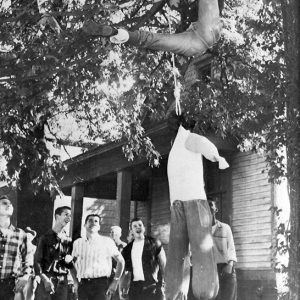 Effigy Hanging
Effigy Hanging
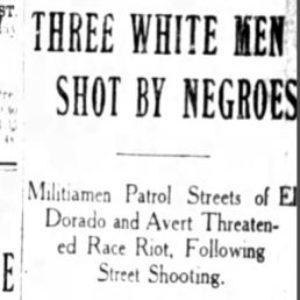 El Dorado Race Riot Article
El Dorado Race Riot Article
El Dorado Race Riot of 1910
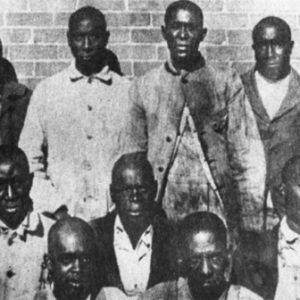 Elaine Massacre Defendants
Elaine Massacre Defendants
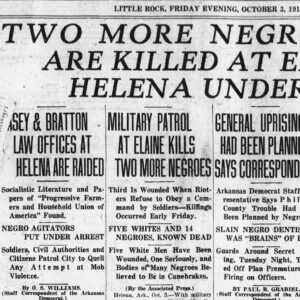 Elaine Massacre Headlines
Elaine Massacre Headlines
Elaine Massacre of 1919
aka: Elaine Race Riot of 1919
aka: Elaine Race Massacre
 Elaine Nurses
Elaine Nurses
Elligin and Anderson (Lynching of)
 Elligin and Anderson Lynching Article
Elligin and Anderson Lynching Article
 Ellison and Son
Ellison and Son
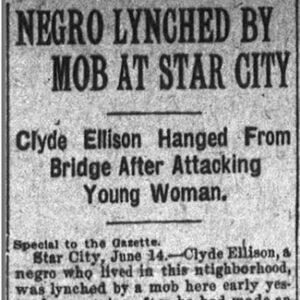 Ellison Lynching Article
Ellison Lynching Article
Ellison, Clyde (Lynching of)
Ellison, Eugene (Killing of)
Emancipation
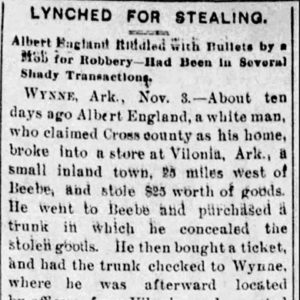 England Lynching Editorial
England Lynching Editorial
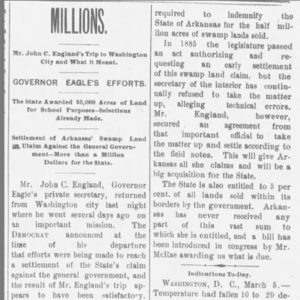 John England Article
John England Article
Environmental Racism
 Eugene Ellison
Eugene Ellison
Factory System
aka: Indian Trading Posts
aka: Indian Factory System
Farmer, John (Lynching of)
Fayetteville Schools, Desegregation of
 Fifty-seventh U.S. Colored Infantry
Fifty-seventh U.S. Colored Infantry
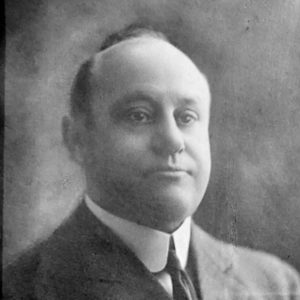 Jacob Fink
Jacob Fink
 First National Bank Ad
First National Bank Ad
Fleming, Sam (Lynching of)
Flemming, Owen (Lynching of)
 Adolphine Krause Fletcher
Adolphine Krause Fletcher




